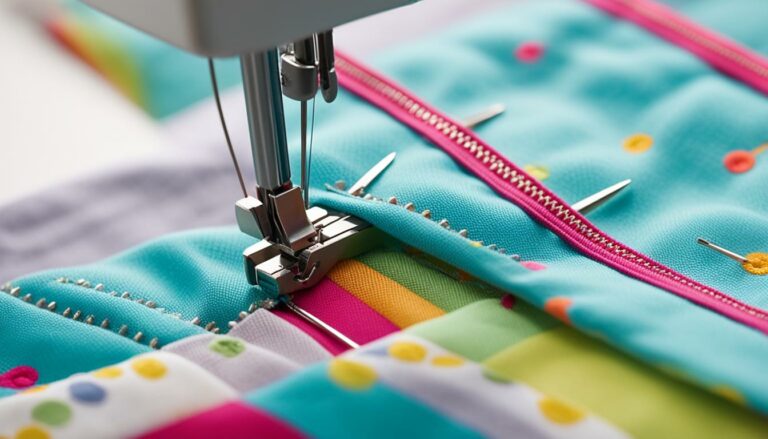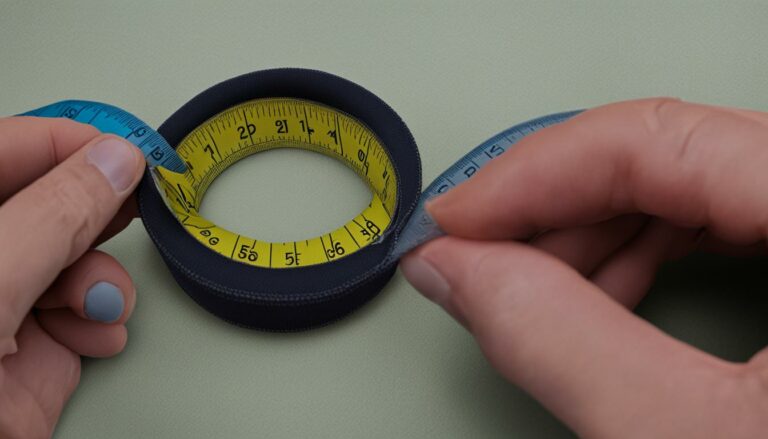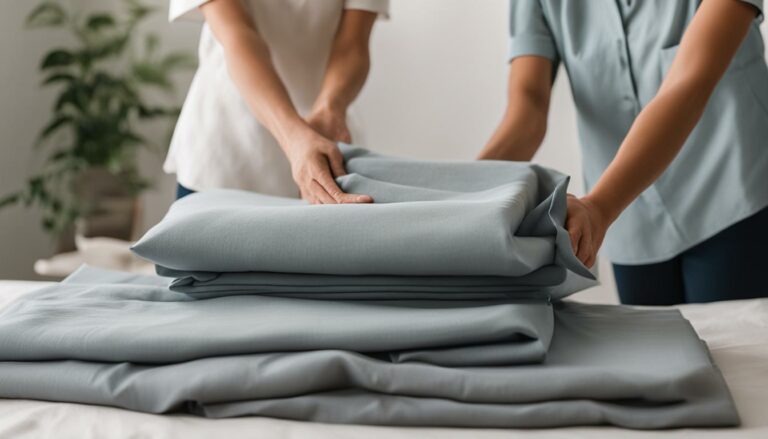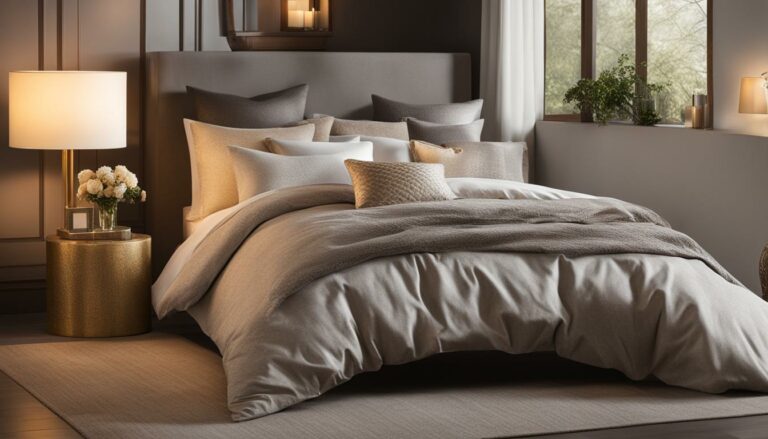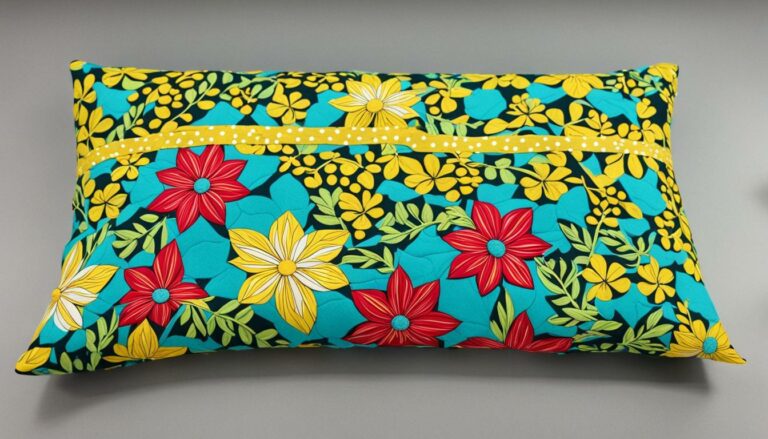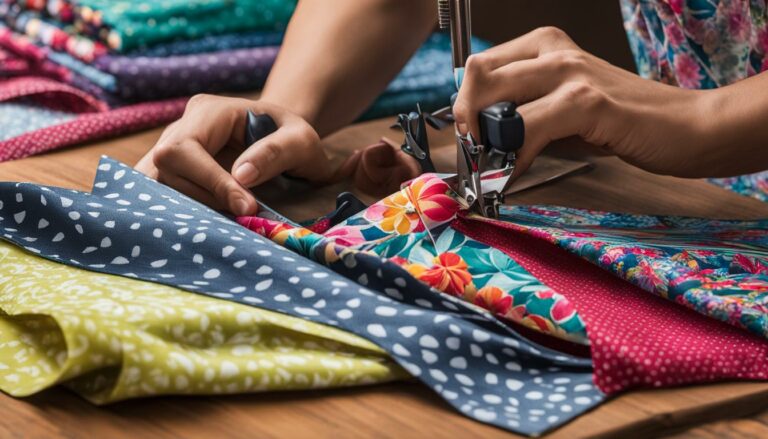Are Shams Pillowcases? Understanding Bedding Essentials
Eric Christie stands as a luminary in the bedding industry, with a career spanning nearly four decades since the early 1980s. His journey through the world of bedding has seen him wear many hats – a manufacturer, designer, and retailer, showcasing his versatility and expertise in Read more...
pillowsandbedsheets.com and its partners may earn a commission if you purchase a product through one of our links
When it comes to bedding essentials, pillow shams and pillowcases are two terms that are often used interchangeably. However, they serve different purposes and have unique features that set them apart. Understanding the differences between shams and pillowcases can help you make informed choices for your bedroom decor.
Pillow shams are primarily used for decorative purposes. They are designed to enhance the aesthetic appeal of your bed by adding an extra layer of style and sophistication. Decorative pillow shams come in various designs, such as floral, ruffled, or quilted, allowing you to choose the perfect match for your bedroom decor. They usually have an opening on the back with a zipper or button for easy insertion of the pillow. Shams for bedding are available in different sizes, including king size and standard size pillow shams, ensuring a perfect fit for your pillows.
In contrast, pillowcases are primarily functional and serve the purpose of protecting your pillows. Pillowcases are simpler in design, usually open at one end, and made from soft and cozy materials for optimal comfort while sleeping. They come in various materials, such as cotton, polyester, satin, and silk. You can choose the material that suits your preferences and needs.
Now that you understand the differences between shams and pillowcases, you can create a beautifully coordinated and comfortable bed that reflects your personal style.
Key Takeaways:
- Pillow shams are primarily decorative, while pillowcases are functional.
- Pillow shams enhance the aesthetic appeal of your bed, while pillowcases protect your pillows.
- Shams for bedding come in various designs, sizes, and materials, allowing for customization.
- Pillowcases are usually open on one end and made from soft and cozy materials for comfort.
- Understanding the differences between shams and pillowcases helps you make informed choices for your bedroom decor.
Understanding Pillowcases
Pillowcases are an essential item in every bedroom. They serve the purpose of protecting your pillows while providing a comfortable place to rest your head.
The most common material for pillowcases is cotton, which is affordable and offers a soft and warm surface. Cotton pillowcases are breathable and hypoallergenic, making them ideal for sensitive skin. They are also easy to care for and can withstand regular washing without losing their shape or color.
For those looking for an alternative to cotton, polyester pillowcases are another option. They are durable, wrinkle-resistant, and less likely to shrink or fade. However, polyester may not absorb moisture as well as natural fabrics, which can be a consideration for individuals who perspire heavily during sleep.
Satin pillowcases have a luxurious and smooth texture that can help reduce frizziness and minimize hair breakage. They also have a shiny appearance that adds a touch of elegance to your bedding. Satin pillowcases are often recommended for individuals with curly or textured hair as they can help retain natural oils and prevent hair tangling.
For a truly indulgent experience, silk pillowcases are the epitome of luxury. Silk pillowcases offer a silky-smooth surface that glides against the skin, reducing friction and preventing sleep creases. In addition, silk is hypoallergenic and less likely to absorb moisture, making it an excellent choice for individuals with acne or sensitive skin.
When choosing pillowcases, consider your personal preferences and specific needs. Whether you opt for the familiarity of cotton, the low-maintenance of polyester, the glamour of satin, or the opulence of silk, selecting the right pillowcases can enhance your sleeping experience and complement your bedroom decor.
| Material | Benefits |
|---|---|
| Cotton | Soft, breathable, hypoallergenic |
| Polyester | Durable, wrinkle-resistant |
| Satin | Reduces frizz, minimizes hair breakage |
| Silk | Luxurious, smooth, hypoallergenic |
Introducing Pillow Shams
Pillow shams are an essential addition to your bedding set if you’re looking to add a touch of elegance and style. These decorative pillow covers can instantly transform ordinary pillows into eye-catching accessories that enhance the overall look of your bed.
Designed with attention to detail, pillow shams feature a discrete opening on the back, often with a hidden closure, making it easy to insert and remove your pillows. They are typically bordered on three or four sides with a flat piece of fabric called a flange, adding a sophisticated touch to the design.
There are several types of pillow shams available to suit your personal style and preferences. Standard shams have a plain rectangular design that complements any bedding ensemble. Quilted shams feature intricate stitching patterns, adding texture and visual interest to your bed. If you want a more luxurious look, consider flanged pillow shams, which have an extra fabric border around the perimeter, creating an elegant frame for your pillows.
While pillowcases mainly serve a functional purpose of protecting your pillows, pillow shams are primarily used for decoration. They are perfect for layering and can be placed in front of your regular pillows to create a polished look. Mixing and matching different pillow sham designs and textures allows you to customize your bed and showcase your personal style.
Take a look at this example of how pillow shams can enhance the appearance of your bed:
| Pillow Sham Type | Description |
|---|---|
| Standard Shams | Plain rectangular design |
| Quilted Shams | Decorative stitching patterns |
| Flanged Shams | Extra fabric border around the perimeter |
Elevate the aesthetic appeal of your bed by incorporating pillow shams into your bedding ensemble. Whether you prefer a classic look or want to add a touch of extravagance, pillow shams offer endless possibilities to create a stylish and inviting sleep sanctuary.
Sizing Pillowcases and Shams
When it comes to choosing the right pillowcases and shams for your bedding, size matters. Pillowcases typically come in three sizes: standard, queen, and king. Each size corresponds to the dimensions of your pillows, ensuring a snug fit and optimal comfort.
Standard pillowcases: These are the most common size and measure 20″ x 26″. They are suitable for standard-sized pillows and provide a cozy and secure fit.
Queen pillowcases: If you have larger queen-sized pillows, you’ll need pillowcases specifically designed for this size. Queen pillowcases typically measure 20″ x 30″ and offer a little more room to accommodate the larger pillows.
King pillowcases: For those with king-sized pillows, king pillowcases are the perfect choice. Measuring 20″ x 36″, these pillowcases provide ample space to encase your king-sized pillows comfortably.
On the other hand, pillow shams offer even more versatility in sizing. While the options can vary, there are three commonly seen sizes:
| Sham Type | Dimensions |
|---|---|
| Standard Sham | 20″ x 26″ |
| King Sham | 20″ x 36″ |
| Euro Sham | 26″ x 26″ |
When selecting pillow shams, consider the look you want to achieve and the size of your pillows. Standard shams are a popular choice for standard-sized pillows, while king shams can accommodate larger pillows. Euro shams, with their square shape, add a touch of elegance and are perfect for decorative purposes. Remember to choose shams that match the dimensions of your pillows for a seamless and stylish bedding ensemble.
Caring for Pillows, Pillowcases, and Shams
To keep your pillows, pillowcases, and shams in good condition, proper care is essential. Here are some tips to ensure their longevity and cleanliness.
1. Use Pillow Protectors
Invest in pillow protectors to prevent lumps and stains on your pillows. These protective covers act as a barrier between your pillows and pillowcases, keeping them fresh and clean.
2. Washing Pillows
Wash your pillows every six months or as recommended by the manufacturer. Follow the instructions on the care label for the best results. Most pillows can be machine-washed, but check for any specific instructions regarding temperature and cycle settings.
3. Drying Pillows
After washing your pillows, ensure they are thoroughly dried before using them again. Place them in the dryer on a low heat setting or lay them flat to air dry. Fluff them regularly during the drying process to maintain their shape.
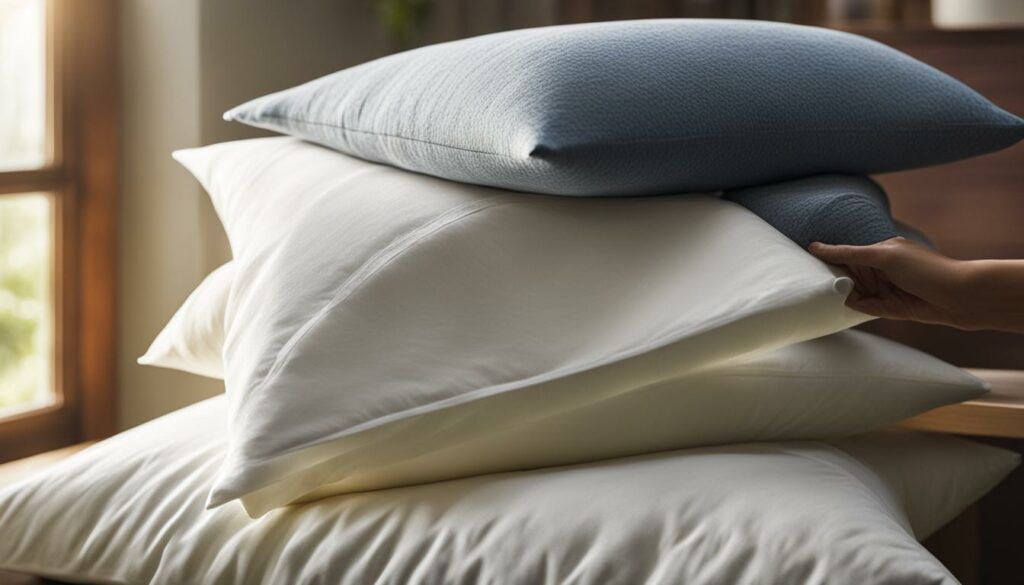
4. Pillow Sprays
If you enjoy a fresh scent on your pillows, consider using pillow sprays. However, choose gentle sprays that won’t damage the materials. Remember to follow the instructions provided with the spray to avoid any potential fabric discoloration.
5. Washing Pillowcases and Shams
Wash your pillowcases and shams separately from other laundry to prevent tangling and damage. Follow the care instructions on the labels, using gentle washing and drying settings to preserve their quality. Additionally, consider ironing or steaming your shams to keep them looking crisp and neat.
6. Fluffing Your Pillows
Regularly fluff your pillows to maintain their shape and prevent them from becoming lumpy. Give them a good shake and knead them gently to distribute the filling evenly.
7. Invest in High-Quality Pillows
Consider investing in high-quality pillows to ensure their longevity. While they may be pricier, high-quality pillows tend to last longer and provide better support for a comfortable sleep experience.
| Pillow Care Tips: |
|---|
| Use pillow protectors to prevent lumps and stains. |
| Wash pillows every six months as recommended by the manufacturer. |
| Dry pillows thoroughly before use. |
| Choose gentle pillow sprays for a fresh scent. |
| Wash pillowcases and shams separately using gentle settings. |
| Regularly fluff your pillows to maintain their shape. |
| Invest in high-quality pillows for durability and comfort. |
What Happens If You Don’t Change Your Pillowcase?
Regularly changing your pillowcases is essential for maintaining the quality and cleanliness of your pillows. Over time, pillowcases can wear down and accumulate dirt, sweat, and oils, which can affect the overall comfort and hygiene of your sleep environment. Here are some factors to consider:
The Lifespan of a Pillowcase
A pillowcase’s lifespan depends on various factors, such as the quality of the fabric and how well you care for it. On average, a pillowcase can last for 2 to 3 years with regular use. However, it’s important to note that frequent washing, exposure to harsh chemicals, and rough handling can shorten its lifespan.
Impact on Pillow Quality
A worn-out or low-quality pillowcase can have a negative impact on the overall quality of your pillows. As pillowcases deteriorate, they may develop rips, tears, or loose threads, which can lead to filling exposure and even the loss of pillow filling over time. Moreover, unpleasant odors can seep into the pillows, affecting their freshness and cleanliness.
When you don’t change your pillowcase regularly, you may experience:
- Increased potential for allergies and skin irritations due to the accumulation of allergens, dust mites, and bacteria.
- Reduced breathability of the pillow, leading to discomfort and potential skin issues.
- Unpleasant smells and odors that can affect your overall sleep experience.
Keep Your Pillows Clean and Fresh
To ensure your pillows stay clean, fresh, and comfortable, it is crucial to change your pillowcases every 2 to 3 years. By doing so, you’ll maintain a healthy sleep environment and extend the lifespan of your pillows. Additionally, remember to follow the care instructions provided by the manufacturer to keep your pillows and pillowcases in good condition for longer.
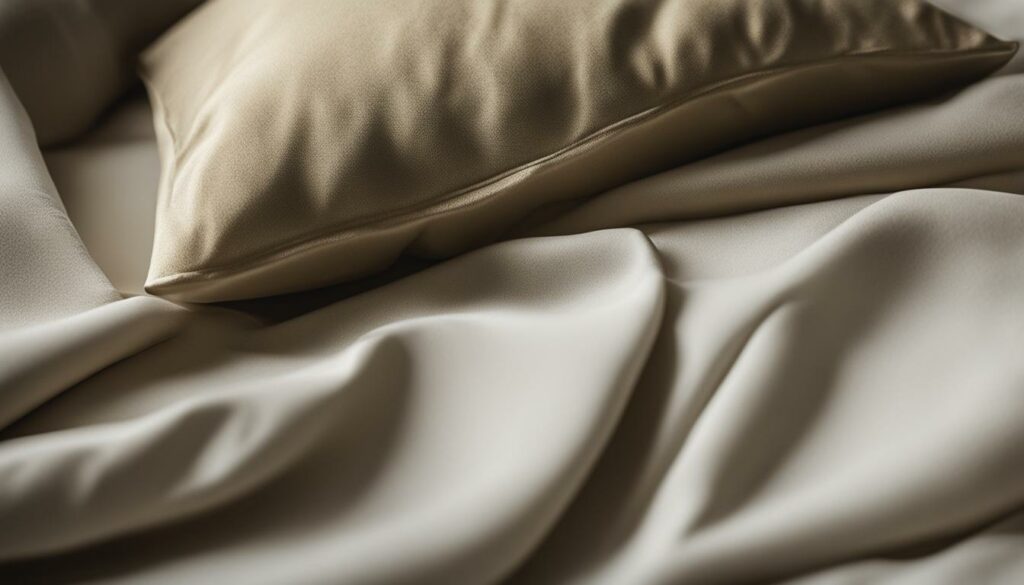
| What Happens If You Don’t Change Your Pillowcase? | Consequences |
|---|---|
| The accumulation of dirt, sweat, and oils | Unpleasant odors and reduced freshness |
| Exposure to allergens, dust mites, and bacteria | Potential allergies and skin irritations |
| Worn-out or low-quality material | Rips, tears, and loss of pillow filling |
| Poor breathability of the pillow | Discomfort and potential skin issues |
When to Clean Your Pillowcases
Pillowcases play an important role in maintaining a clean and comfortable sleeping environment. Regular cleaning is essential to ensure that your pillowcases remain fresh and hygienic. Here’s a guide to help you determine when and how often to clean your pillowcases.
Washing Frequency
It is recommended to clean your pillowcases at least once a week or every two weeks. This frequency helps remove dirt, sweat, oils, and allergens that accumulate on the fabric. Regular washing not only keeps the pillowcases clean but also prolongs their lifespan.
Separate Washing
When washing your pillowcases, it’s best to wash them separately from heavier items, such as towels or jeans. This practice helps prevent the pillowcases from getting tangled or damaged during the washing process. Additionally, washing pillowcases separately allows for more effective cleaning and helps preserve their quality.
Pillowcase Cleaning Tips
- Before washing, check the care instructions provided by the manufacturer. Different fabrics may require specific washing instructions to maintain their quality.
- Use a mild detergent to avoid harsh chemicals that can irritate your skin.
- Wash your pillowcases with warm water to ensure proper cleaning.
- Avoid using bleach or fabric softeners, as they can damage the fabric and reduce the lifespan of your pillowcases.
- If your pillowcases have stubborn stains, consider pre-treating them before washing.
- After washing, hang your pillowcases to air dry or tumble dry on a low heat setting. Avoid high heat, as it can cause shrinkage or damage the fabric.
- Iron your pillowcases on a low heat setting if desired, following the fabric’s care instructions.
By following these cleaning tips and establishing a regular washing routine, you can ensure that your pillowcases remain clean, fresh, and ready for a good night’s sleep.
Can You Sleep On a Sham?
While it’s technically possible to sleep on a sham, it’s important to note that shams are primarily designed for decorative purposes rather than sleep comfort. Unlike pillowcases, which are specifically made for protecting your pillows and providing a cozy surface to rest your head, shams often prioritize style over functionality.
Most shams are made from textured fabrics or adorned with bulky flanges, which may not offer the same level of comfort as traditional pillowcases. These decorative elements can create an uneven sleeping surface and reduce overall comfort during sleep.
It’s more common to remove shams from the bed when it’s time to sleep or use them as support when sitting up in bed, rather than actually sleeping on them. This allows you to enjoy the aesthetic appeal of shams during the day while still maintaining a comfortable sleeping experience at night.
So, while shams can add charm and visual interest to your bedroom, it’s best to use them as decorative accents rather than functional bedding accessories for a good night’s sleep.
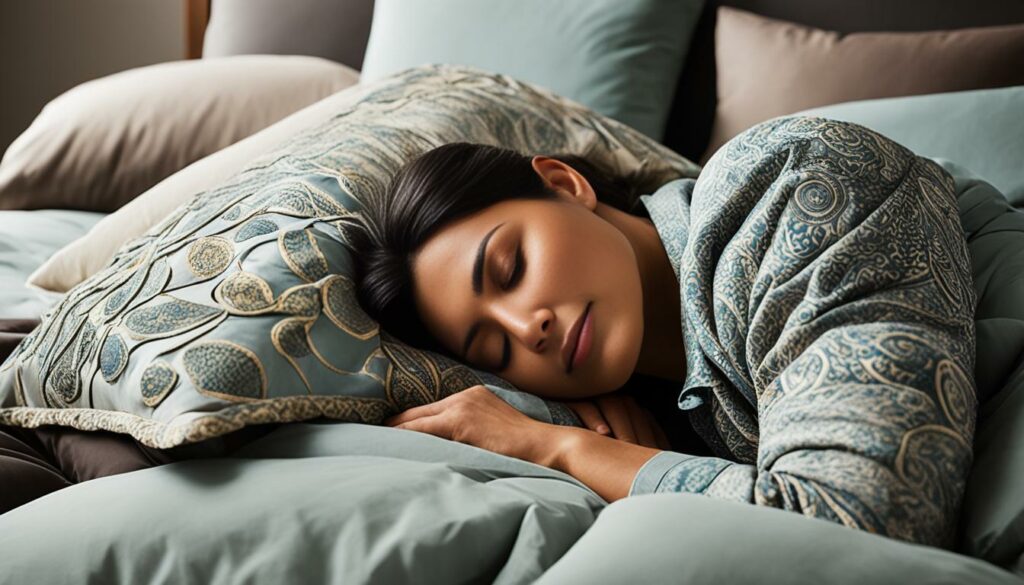
Styling Your Bed with Shams
If you want to elevate the style of your bed, incorporating shams into your bedding arrangement can make a significant difference. Shams offer versatility and allow you to experiment with various pillow arrangements to create a visually appealing and cozy bed. Here are three popular ways to style your bed using shams:
1. Stacked Pillow Arrangement
In this classic arrangement, start by stacking your sleeping pillows against the headboard. These are the pillows you use for sleeping, and you can choose either standard or king-sized pillows, depending on your preference. Once the sleeping pillows are stacked, place decorative shams on top of them. The decorative shams can add color, texture, and pattern to your bed, creating a stylish focal point.
2. Layered Pillow Arrangement
The layered pillow arrangement offers a more luxurious and layered look to your bed. Begin by leaning your sleeping pillows against the headboard as the base layer. Next, add Euro shams behind the sleeping pillows. Euro shams are larger square pillows that provide additional height and support. Finally, place standard or king-sized shams in front of the sleeping pillows and Euro shams, creating a layered effect. This arrangement allows you to showcase different pillow sizes and textures, adding depth and visual interest to your bed.
3. Asymmetrical Pillow Arrangement
If you prefer a more creative and asymmetrical look, consider using different-sized pillows on one side of the bed. Start by placing your sleeping pillows against the headboard, as usual. On one side of the bed, arrange a combination of standard and decorative shams of different sizes, colors, and textures. This asymmetrical arrangement adds a touch of whimsy and personality to your bed, making it a unique focal point in the room.
Experiment with these different pillow arrangements and find the one that suits your style and preference. You can mix and match shams in various colors and patterns to create a personalized and inviting bed.
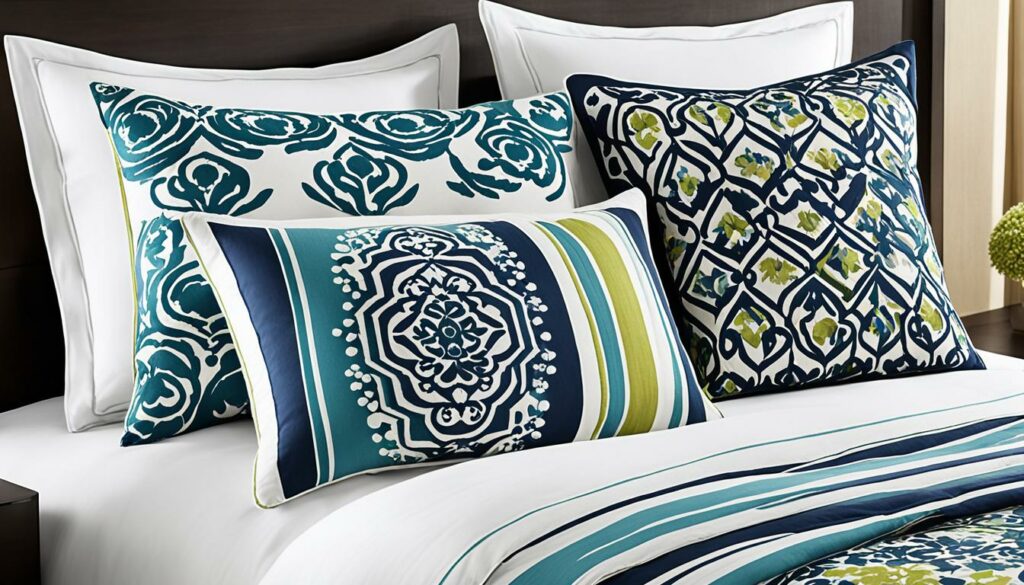
Remember, styling your bed with shams is not just about aesthetics but also about creating a comfortable and cozy space where you can relax and unwind. Find the arrangement that brings you joy and transforms your bed into a haven of comfort and style.
The Versatility of Pillow Shams
Pillow shams are not only a stylish addition to your bedding, but they also offer incredible versatility when it comes to home decor. With their removable covers and various designs, pillow shams can be easily swapped out to change the look and feel of your bedroom without having to replace the entire bedding set.
But the versatility of pillow shams extends beyond the bedroom. These decorative accent pillows can be used in other areas of your home, such as on sofas or chairs, to add a touch of elegance and personality to your living space. Whether you want to create a cozy reading nook or spruce up your seating area, pillow shams can be the perfect decorative accessory.
One of the advantages of using pillow shams is their practicality. The removable covers make them easy to clean and maintain, allowing you to keep them looking fresh and vibrant for a long time. Additionally, pillow shams can be a cost-effective way to update the look of your space, providing endless possibilities for mixing and matching colors, patterns, and textures.
So, if you’re looking to add a decorative touch to your bed or elevate the style of your living room, consider the versatility of pillow shams. With their ability to transform your space and create a cohesive and inviting atmosphere, these decorative accent pillows are an excellent choice for any home.
FAQ
Are shams pillowcases?
No, shams are not pillowcases. While both serve a decorative purpose, shams are primarily used for styling and have a back opening with a zipper or button, whereas pillowcases are designed to protect pillows and are open at one end.
What are the differences between pillowcases and shams?
Pillowcases are intended to protect pillows and are open at one end, while shams are decorative covers with a back opening and are primarily used for styling purposes. Pillowcases are simpler in design and made from soft materials for comfort while sleeping.
What are the common materials used for pillowcases?
The most common material for pillowcases is cotton, which is affordable and offers a soft and warm surface. Polyester pillowcases are also available, but they may not absorb moisture as well. Satin pillowcases have a shiny appearance and can help reduce frizzy hair and minimize static, while silk pillowcases are luxurious and benefit those with acne or sensitive skin.
What are pillow shams?
Pillow shams are decorative pillow covers that can transform ordinary pillows into stylish accessories for your bedding set. They have a back opening with a hidden closure and are usually bordered on three or four sides with a flat piece of fabric called a flange. They come in different designs, including standard shams, quilted shams, and flanged pillow shams.
What sizes do pillowcases and shams come in?
Pillowcases come in standard, queen, and king sizes, while shams are available in standard, king, and euro sizes. It’s important to choose pillowcases or shams that correspond to the size of your pillows for a proper fit.
How should I care for pillows, pillowcases, and shams?
It is recommended to use pillow protectors to prevent damage and wash pillows every six months following the manufacturer’s instructions. Pillowcases and shams should be washed separately with gentle settings to prevent damage. Avoid using harsh pillow sprays and consider investing in high-quality pillows for longer-lasting use.
How often should I change my pillowcases?
It is recommended to change your pillowcases every 2 to 3 years. Over time, pillowcases may develop damage or unpleasant odors that can compromise the quality of your pillows. Regularly changing your pillowcases ensures cleanliness and a fresh sleep experience.
When should I clean my pillowcases?
Pillowcases should be cleaned at least weekly or biweekly for optimal hygiene. It’s recommended to wash them separately from heavier items to preserve their quality. Regular cleaning of pillowcases helps maintain a fresh and clean sleeping environment.
Can you sleep on a sham?
While it’s technically possible to sleep on a sham, it is not its intended purpose. Shams are primarily used for decoration and may not provide the same level of comfort as pillowcases. They may have textured fabrics or bulky flanges that can be less comfortable for sleeping.
How can I style my bed with shams?
There are various ways to style your bed using shams. You can stack your sleeping pillows against the headboard and place decorative shams on top, create a layered arrangement with Euro shams behind the sleeping pillows and standard or king shams in front, or go for a creative and asymmetrical look by using different-sized pillows on one side of the bed. These arrangements allow you to display pillows of different sizes, colors, and textures for a visually appealing bed.
Can pillow shams be used for purposes other than beds?
Yes, pillow shams can be used in other areas of the home, such as on sofas or chairs, to add decorative accents. Their removable covers make them easy to clean, and they can be a cost-effective way to update the look of your space.
Eric Christie stands as a luminary in the bedding industry, with a career spanning nearly four decades since the early 1980s. His journey through the world of bedding has seen him wear many hats – a manufacturer, designer, and retailer, showcasing his versatility and expertise in Read more...


